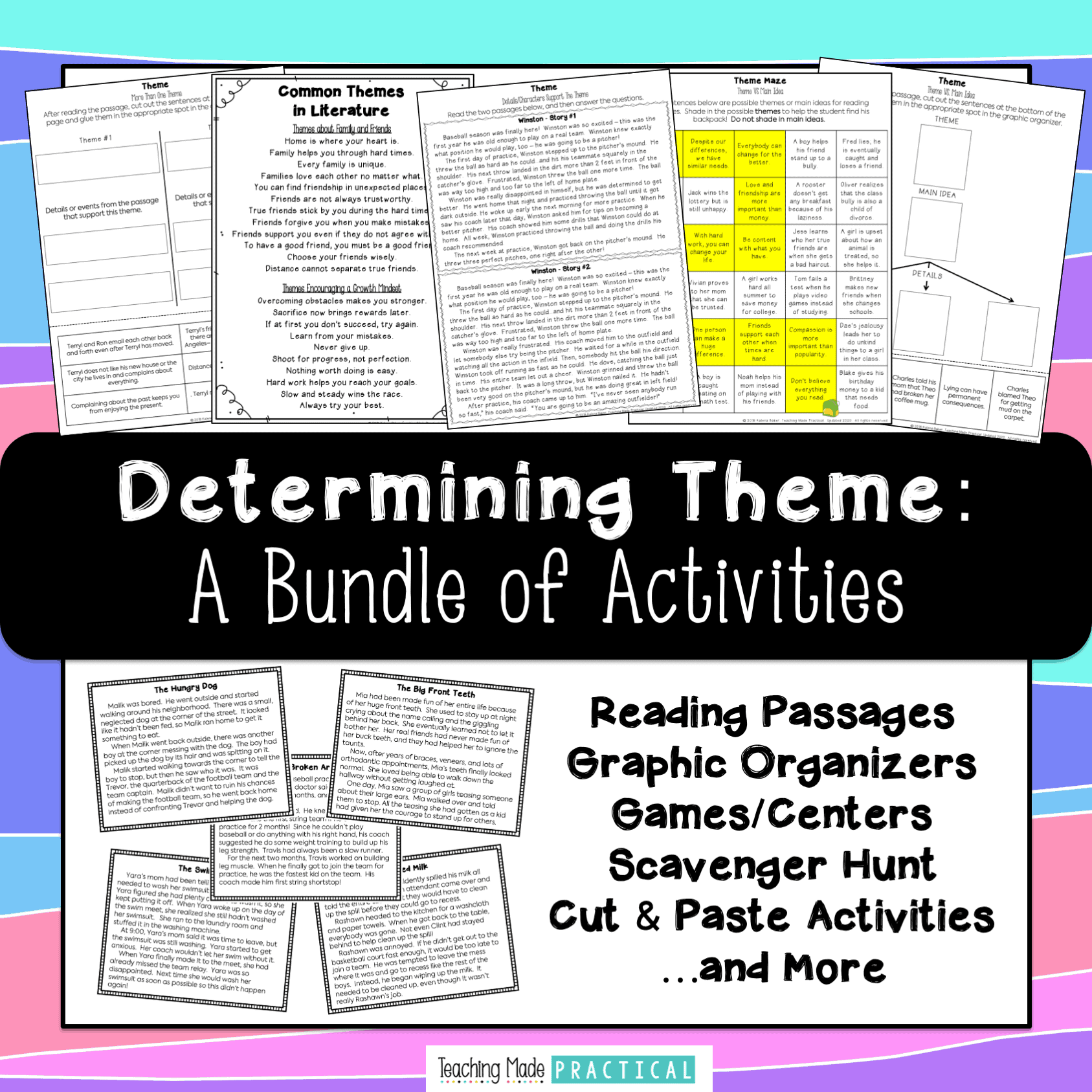Trying to help your 3rd, 4th, or 5th grade students understand how to determine the theme of a story can be extremely challenging. It is a difficult to concept to grasp, as theme is such an abstract idea that must be inferred. Texts can have more than one theme, and sometimes the theme is subjective. In order to distinguish the theme from the main idea, students must have a solid understanding of main idea as well.
All of this can make theme incredibly frustrating to teach to upper elementary students. Hopefully, the theme resources below will help make teaching theme easier and less stressful.
Thee theme activities and resources below include:
- ideas for scaffolding your theme lesson plans so that students will better understand how to determine the theme of a story
- higher order thinking questions you can use while teaching theme to help students think theme in different ways
- helping students distinguish between main idea and theme
- theme games and center activities
- a free cut and paste theme resource
- a free slideshow to help you teach theme to 3rd, 4th, and 5th grade
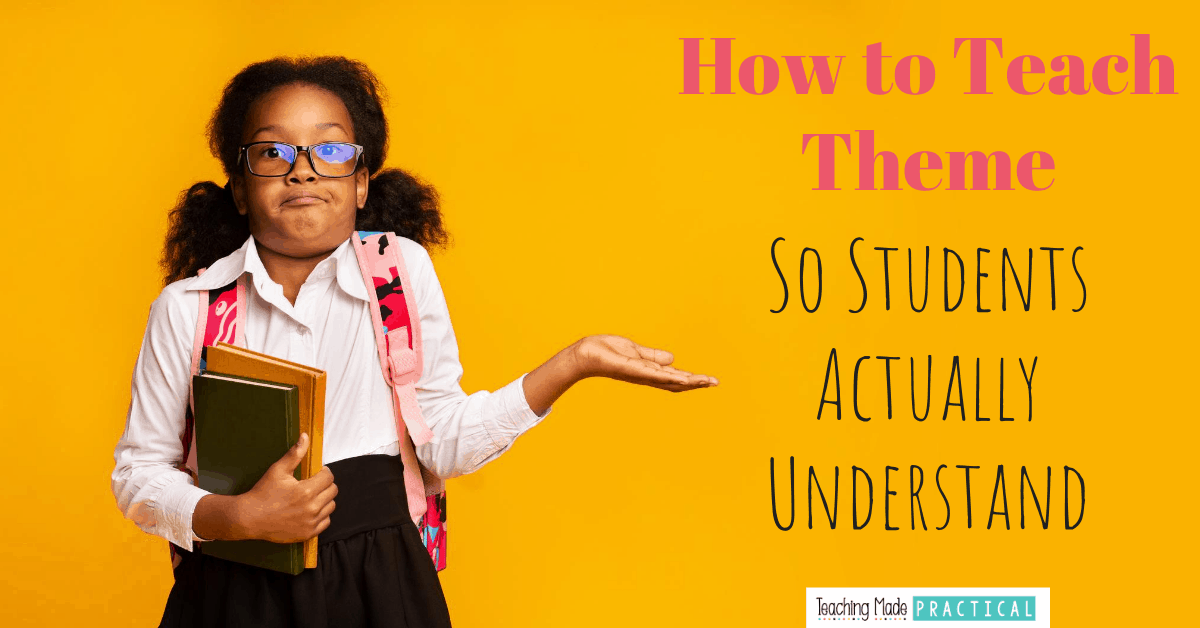
These ideas will help you teach theme in a way that students will actually understand. Scaffold your instruction by teaching each difficult aspect of theme in isolation so you can more easily identify what students are struggling with.
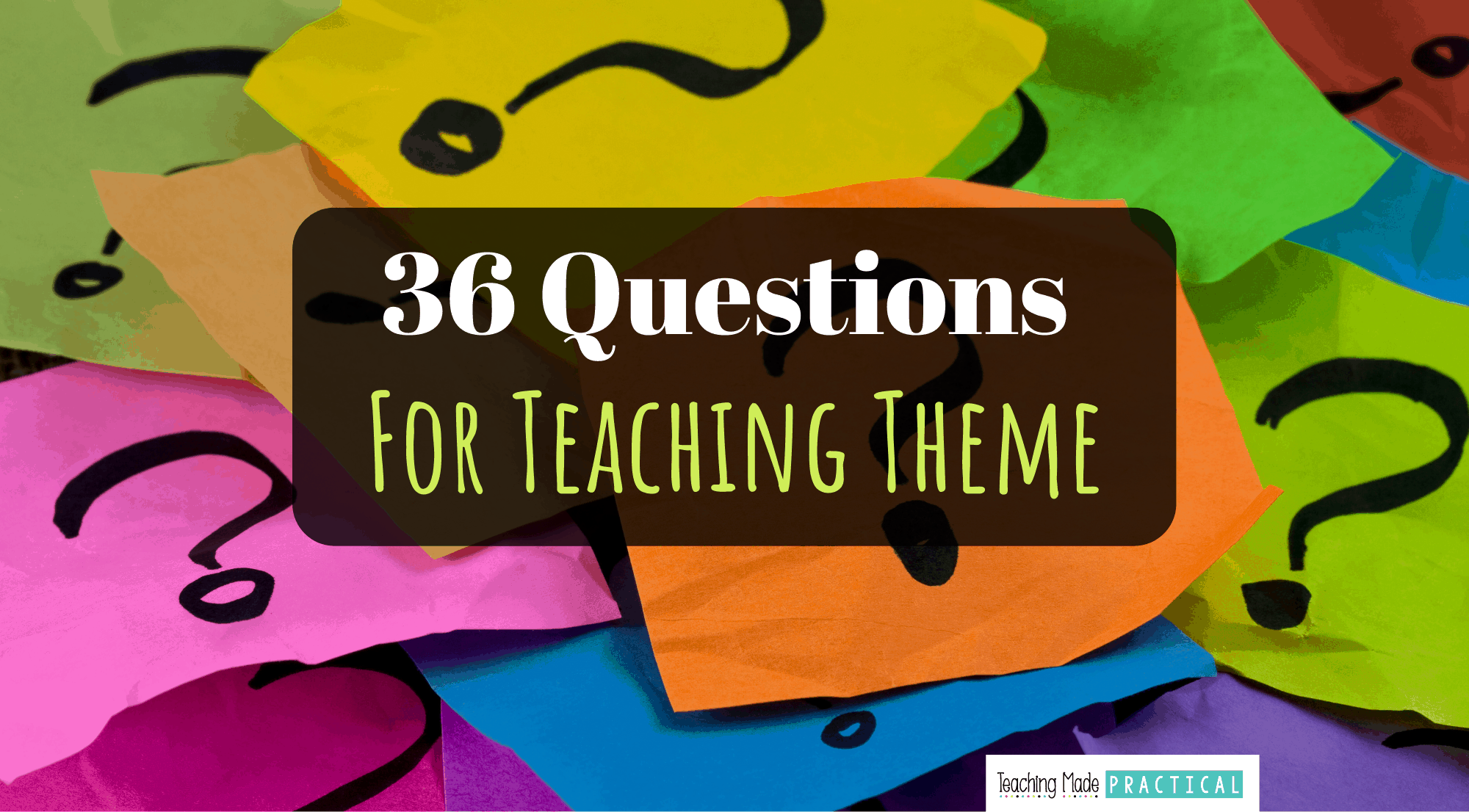
Use these 36 questions when teaching theme to your 3rd, 4th, and 5th grade students. The questions are based on the Revised Bloom's Taxonomy and help you ask a variety of questions instead of just "What is the theme of the story?"
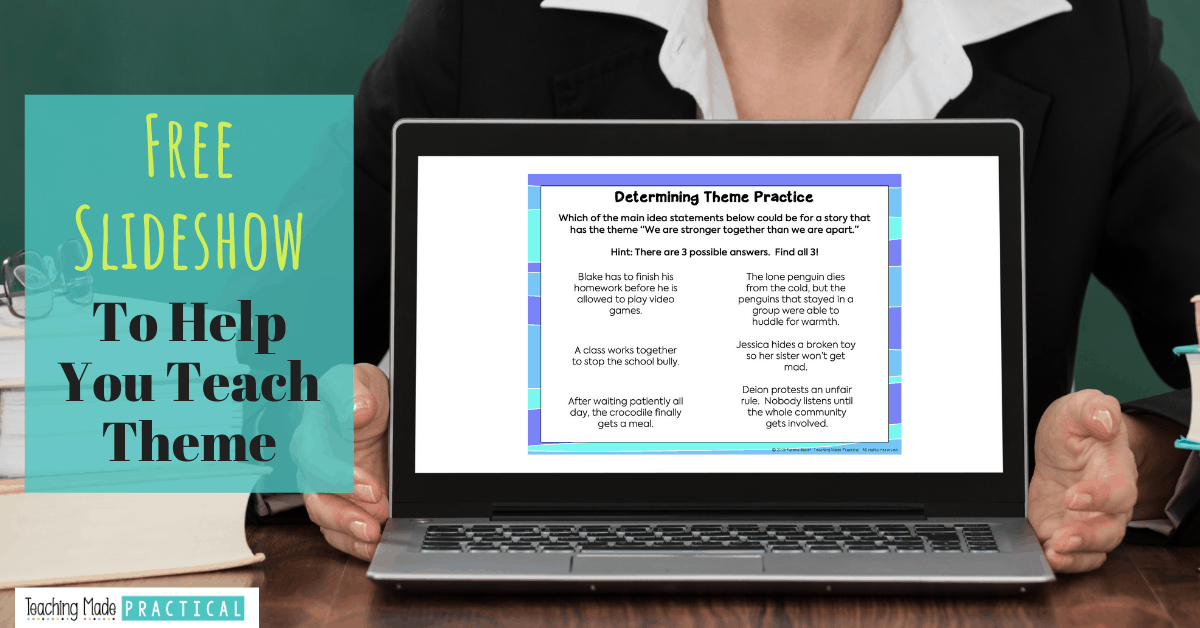
Use this free theme slideshow to help your students practice determining the theme of a story and distinguishing between theme and main idea. These activities are ideal for upper elementary students.
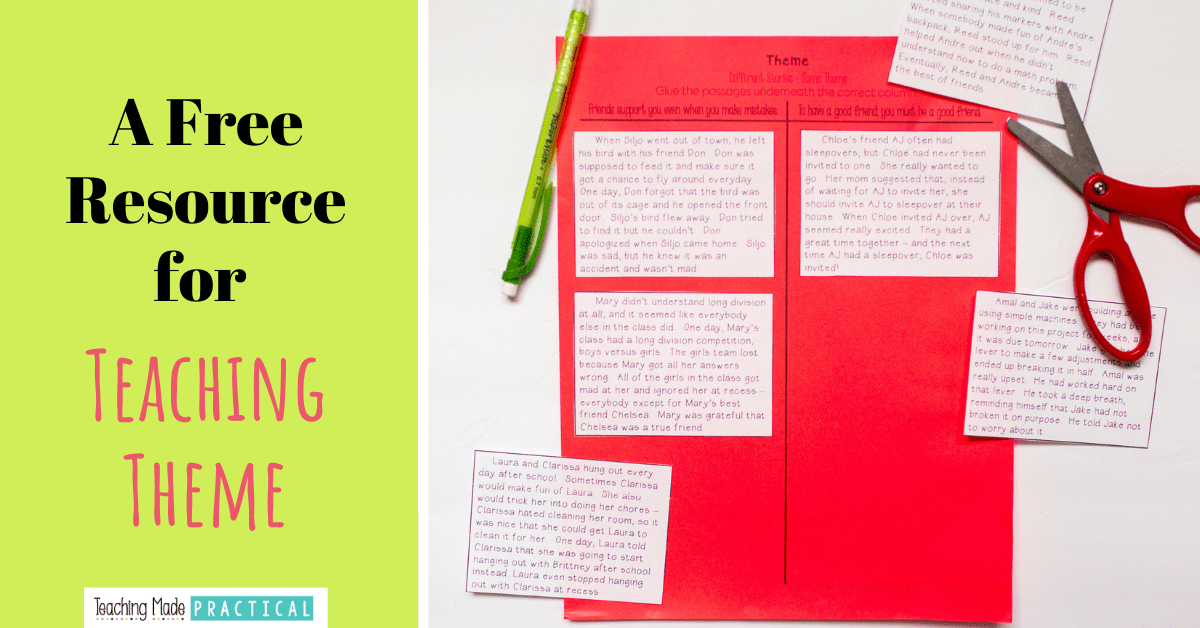
This cut and paste freebie for teaching theme asks your students to sort 6 short paragraphs based on the theme of the story. This short activity can be used as a center or to help introduce your students to theme.
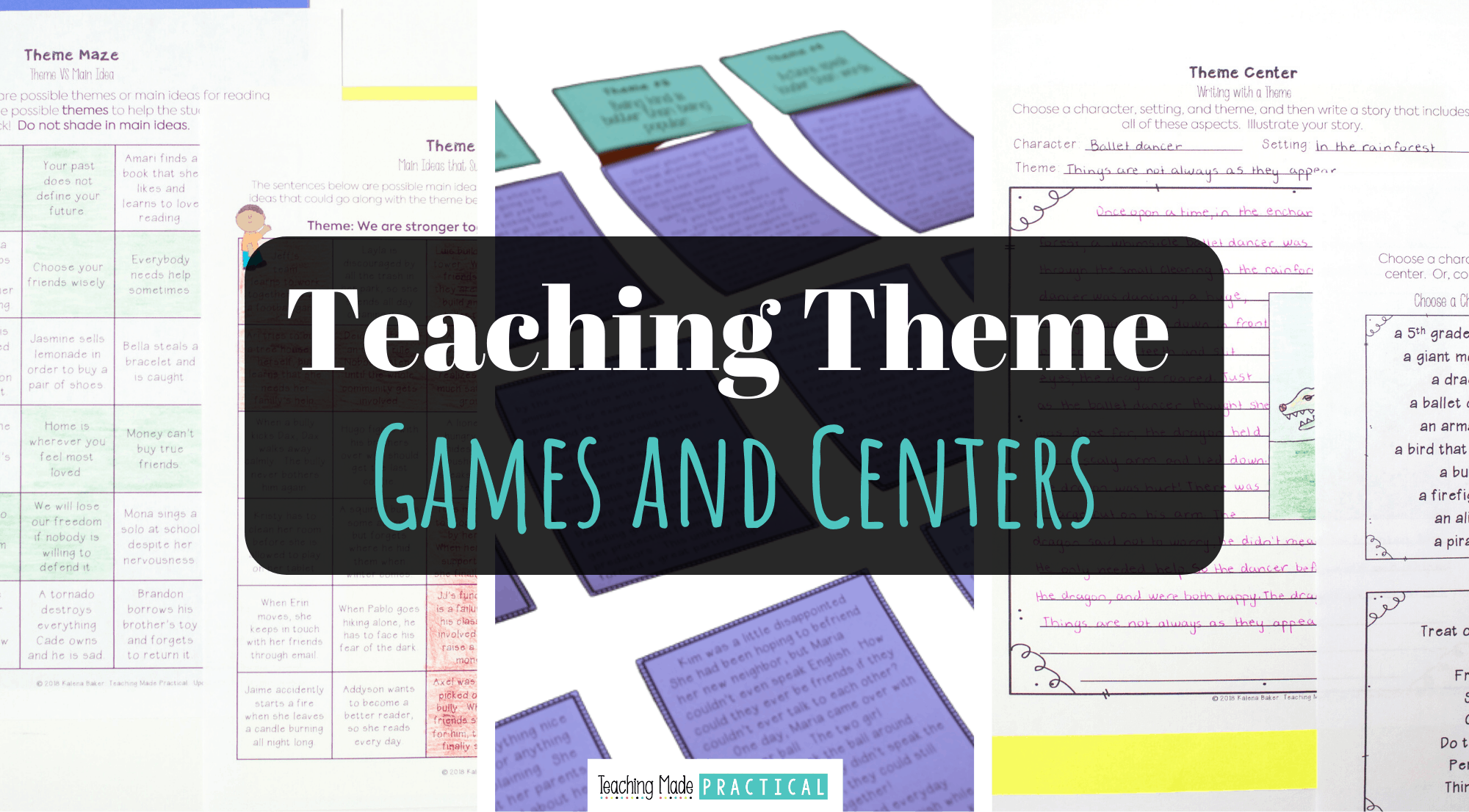
These games and center activities will help your students practice determining the theme of a story / fiction text. This is an engaging way for 3rd, 4th, and 5th grade students to better understand theme.
For some no prep and low prep activities that will help your students better understand how to determine the theme of a story, check out:
It includes reading pages with scaffolded activities, cut and paste activities, graphic organizers, centers, writing integration, games, a list of common themes, and more. These activities are designed to help students practice theme with scaffolding in a variety of ways so that they truly understand.
The activities above are geared for third, fourth, and fifth graders, but can easily be adapted to 6th grade students that need to review or practice theme. The activities address some of the following Common Core Standards:
CCSS.ELA-LITERACY.RL.4.2
Determine a theme of a story, drama, or poem from details in the text; summarize the text.
CCSS.ELA-LITERACY.RL.5.2
Determine a theme of a story, drama, or poem from details in the text, including how characters in a story or drama respond to challenges or how the speaker in a poem reflects upon a topic; summarize the text.
CCSS.ELA-LITERACY.RL.3.2
Recount stories, including fables, folktales, and myths from diverse cultures; determine the central message, lesson, or moral and explain how it is conveyed through key details in the text.

